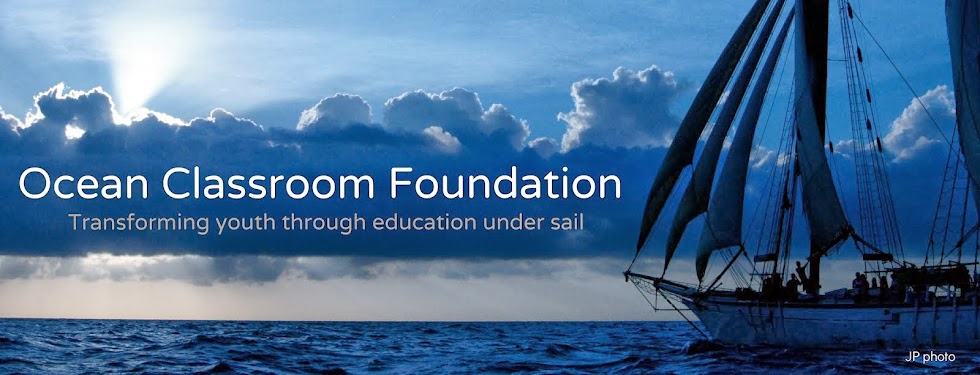Bird Song
>> Wednesday, March 27, 2013
Our second day in Trinidad was filled with birds. After a
hot van ride from Port of Spain into the mountains, our group arrived at the
Asa Wright Nature Centre. As we walked up the path towards the buildings,
flowers were blooming beside us and the calls of birds filled the air. I hadn’t
realized until then how special birdsong is to land and how we don’t get it
sailing.
At the
sanctuary door, our knowledgeable guide Denise met us and led us to the front
porch overlooking a feast of feeders. Birds were fluttering over juicy fruits
and sugar water nectar: bright purple Honeycreepers, iridescent green Tanagers,
yellow-patched Bananaquits, and three different species of Hummingbirds.
Then we
were led into the rainforest. As we walked through the rich greenery, Denise
stopped to share information with us. We learned about queen leafcutter ants
that fly only once in their lives and grow almost as big as your thumb. We
learned about birds that clean themselves with ants. We saw Oropendola birds
who build nests like hanging baskets from the treetops, we admired flowers
named “sexy pink,” and smelled the sweet spice of crushed clove leaves. It was
so inspiring to see such a thriving sanctuary, especially in a country so well
known for its birds.
After the
sanctuary, we loaded into the vans again and headed for the Caroni swamp. As
the sun started to lower in the sky, we boarded a small boat and motored down
passageways through thick mangroves. Every few minutes we stopped to gaze at
wildlife: Blue Herons, scampering crabs, and even a pair of snakes in the
branches above us.
Then the
mangroves opened up and we were at the edge of a blue lake, where we stopped.
At the center lay two little bright green islands, and in the distance off to
the left we could see mountains rolling away into puffy purple clouds.
“Here we
wait,” the boat driver said. “They will come in flocks, the ibis from over
there.” He pointed towards the mountains.
We waited. The sun sank and the light grew soft. Just as we started to fidget, someone pointed down the water and we all turned to look. They came in pairs and small groups at first, little red dots skimming a few feet above the gray-blue surface of the lake. Then they came nearer. Their scarlet wings caught the light and as they settled on the island in front of us, they seemed to grow against the green background of foliage.
There were
more. Each group soured bigger than the last, forming swathes of living color
that painted itself across the sky. Each flock settled into the branches of the
trees on the island ahead, the scarlet birds swooping up as they landed,
decorating the emerald island with their bodies so it looked like a bush adorned
with bright, sweet, beautiful flowers, still vibrant in the fading light.
As night
drew in, we finally left the ibis resting on their perches. We turned the boat
around and headed back into the darkened swamp. It had been a long beautiful
day. A cook breeze picked up, raising goose bumps along our arms. As if to
remind us of everything we had seen that day, a lone dove cooed through the
mangroves.
Hila Shooter




